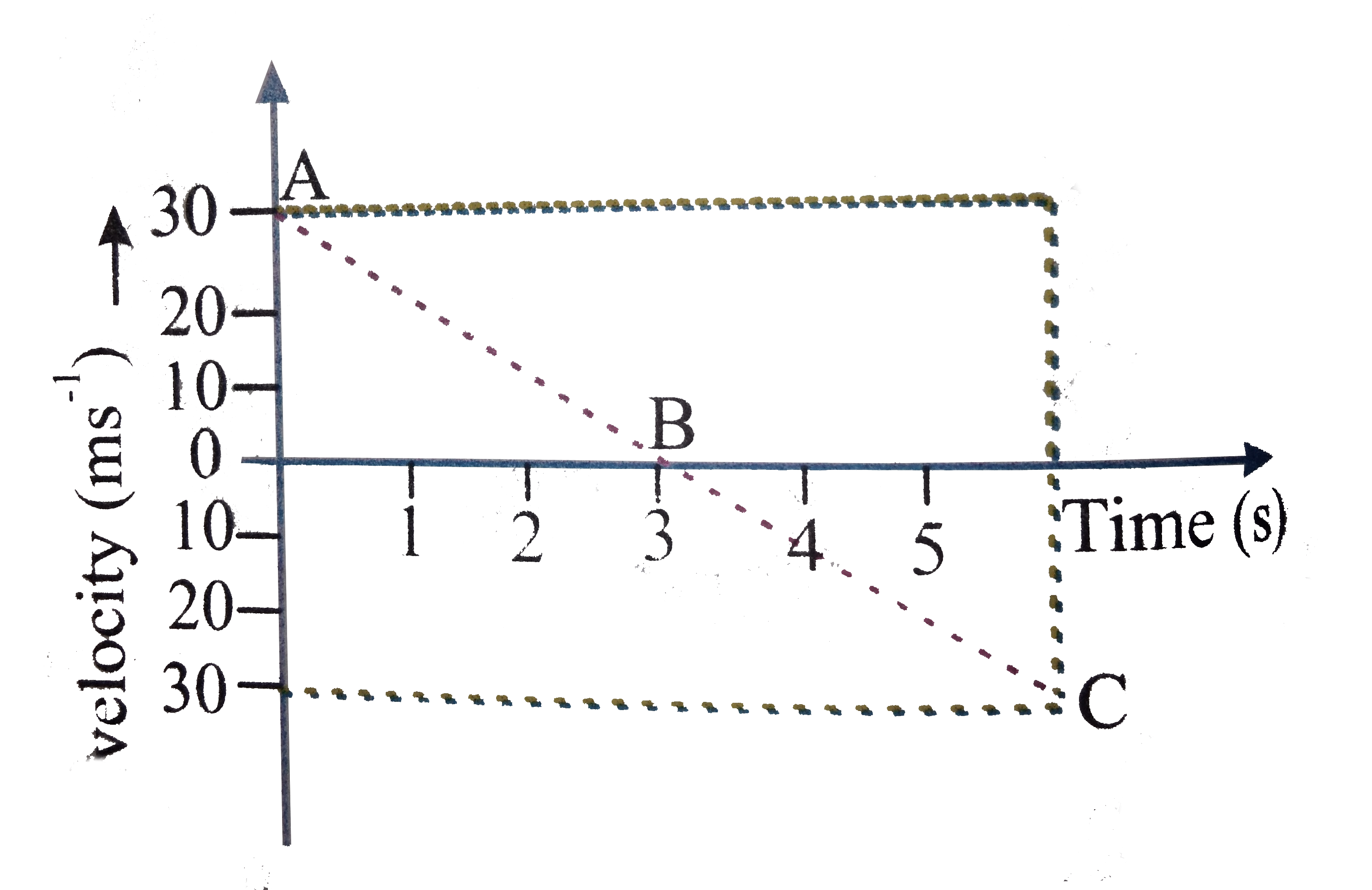A stone is thrown in air in vertically upward direction with velocity 30 m/sec. If the mass of the stone is 10 g than
If 60% of initial energy is lost on reaching to maximum height due to air friction the maximum height will be
10m
14m
18 m
20 m
The correct Answer is:C
PE at max height =40% of intial KE
mgh=40100×12mv2
h=0.4v22g=0.4×45=18.0 m
Topper's Solved these Questions
Similar Questions
A stone is thrown in a vertically upward direction with a velocity of 5ms-1.If the acceleration of the stone during its motion is 10ms-2 in the downward direction,what will be the height attained by the stone and how much time will it take to reach there?
View SolutionA stone is thrown vertically upwards with a velocity of 4.9ms−1. Calculate : the maximum height reached.
View Solution
Knowledge Check

The velocity-time graph of a stone thrown vertically upward with an initial velocity of 30ms−1 is shown in the figure. The velocity in the upward direction is taken as positive and that in the downward direction as negative. What is the maximum height to which the stone rises?A30 mB45 mC60 mD90 mA stone with weight W is thrown vertically upward into the air with initial velocity v0. If a constant forcef due to air drag acts on the stone throughout the flight & if the maximum height attain by stone is h and velocity when it strikes to the ground is v. Which one is correct?
Ah=v20(1+fW)/2g,v=v0Bh=v20/2g(1+fW),v= zeroCh=v20/2g(1+fW),v=v0√W−fW+fDh=v20/2g(1+fW),v=v0√W+fW−fThe friction of the air causes a vertical retardation equal to 10% of the acceleration due to gravity. Take g=10m/s2 the maximum height and time to reach the maximum height will be decreased by
A9%,9%B11%,11%C9%,10%D11%,9%
A ball of mass 50 is thrown vertically upwards
with an initial velocity of 20 ms1 Calculate: (i) in the initial kinetic energy imparted to the ball,
(ii) the maximum height reached if air friction is neglected, and
(iii) the maximum height reached if 40% of the initial energy is lost against the air friction.
Take g=10 ms−2
View SolutionA stone is thrown vertically upwards with a velocity of 4.9ms−1. Calculate : the time taken to reach the maximum height.
View SolutionA stone with weight W is thrown vertically upward into the air with initial velocity v0. If a constant forcef due to air drag acts on the stone throughout the flight & if the maximum height attain by stone is h and velocity when it strikes to the ground is v. Which one is correct?
View SolutionA stone thrown vertically upwards rises S ft in t seconds where S=112t−16t2. The maximum height reached by the stone is
View SolutionAn object is thrown vertically upward with a speed of 30 m/s. The velocity of the object half-a-second before it reaches the maximum height is
View Solution
